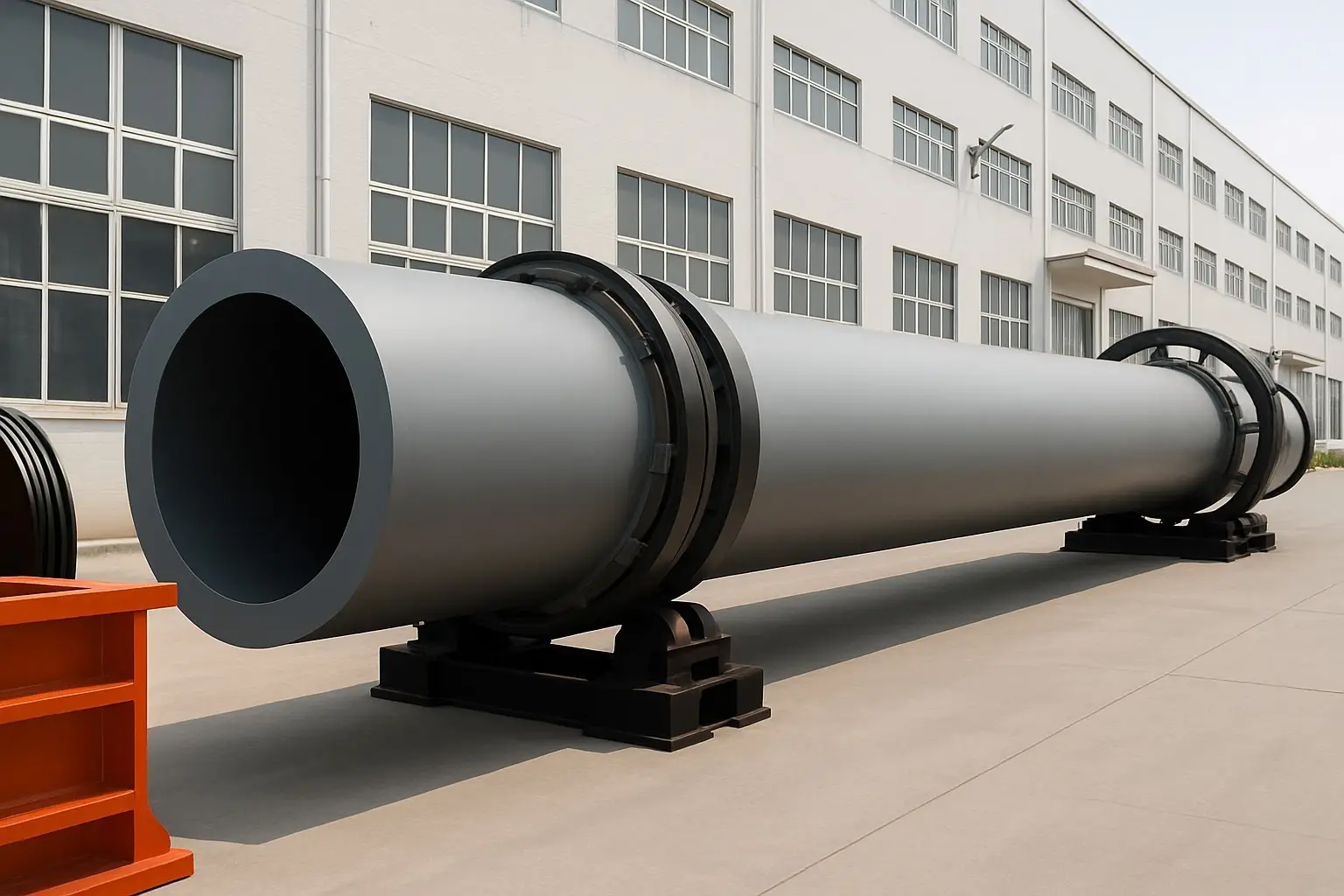Service
Rotary Cooler
Enhancing Cement Kiln Efficiency
What is a Rotary Cooler?
A Rotary Cooler, often referred to as a clinker cooler, is essential support equipment for cement rotary kilns. It cools the high-temperature clinker (1000-1200°C) discharged from the rotary kiln to an optimal temperature (below 200°C). This cooling process involves countercurrent contact between cold air and clinker, resulting in efficient heat exchange. The cooled air then serves as combustion air in the rotary kiln, optimizing the calcination process and reducing heat consumption

Rotary Cooler
Main Purposes of a Cement Rotary Cooler
The rotary cooler plays a vital role in cement production. Firstly, it reduces the temperature of clinker to facilitate efficient grinding, transportation, and storage. Secondly, it recycles heat energy from the clinker, utilizing it to heat secondary and tertiary air, which in turn minimizes fuel consumption. Finally, by achieving the optimal cooling rate, it improves the quality and grindability of the clinker.
Working of a Rotary Cooler
The rotary cooler consists of a tilted rotary cylinder (with a 4°-7° inclination) supported by a stopping wheel device to prevent axial sliding. A large gear ring drives its slow rotation. High-temperature clinkers are fed into the cooler and move axially as the cylinder turns. Inside the cylinder, flights continuously toss the material upward, facilitating effective heat exchange with cold air. Once cooled, the clinker is discharged, and the heated air (400-750°C) returns to the rotary kiln as combustion-supporting air.
Optimizing Heat Exchange
Enhancements in flight arrangement, cylinder inclination, and rotation speed can increase the contact time between clinker and cold air. This ensures sufficient heat transmission from the clinker, maximizing heat recovery and improving overall efficiency.
Types of Heat Transfer in a Rotary Cooler
There are several forms of heat transfer in a rotary cooler. In non-flight zones, heat transfer occurs when high-temperature clinker contacts air, but with limited surface exposure, the rate is slow. Radiative and convective heat transfer involves transferring heat from the clinker to the refractory lining and then to the air in non-flight zones. This process is slow due to large thermal resistance. Heat escaping to the cylinder’s surface is considered a loss, so minimizing this is crucial. In flight zones, convective heat transfer occurs between the cylinder’s bottom clinker and air, although the contact area is limited. The primary heat exchange process happens when the clinker is suspended, allowing full surface exposure and increasing the convection heat transfer area and speed.
Conclusion
The rotary cooler is indispensable in cement production, enhancing efficiency by optimizing clinker cooling and energy recycling. Through strategic design and maintenance, it supports sustainable production and cost-efficiency in conjunction with solutions from providers like DMPCR.
